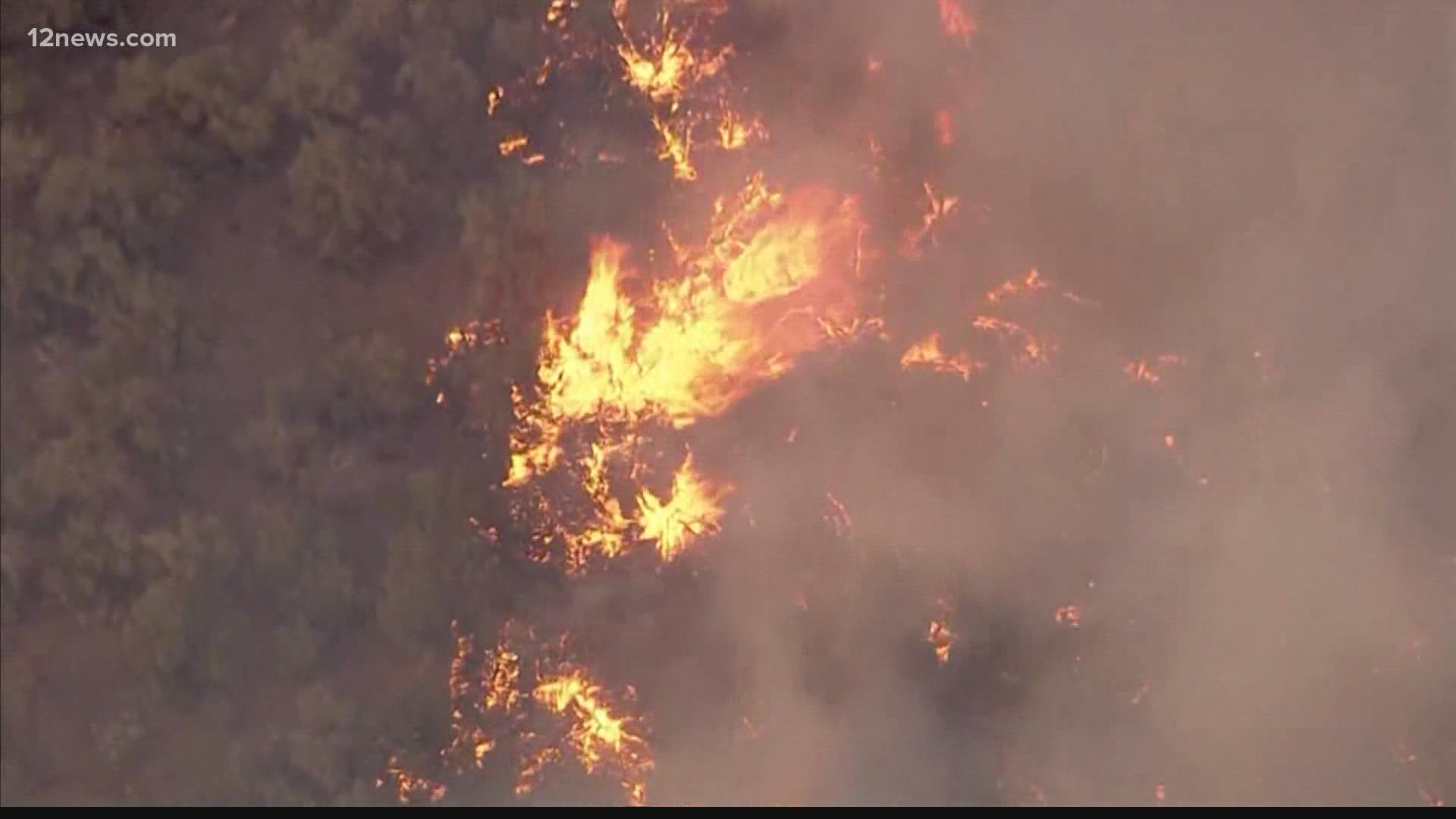BUCKEYE, Ariz. — A much-maligned tree species fueled an early morning brush fire in Buckeye Valley on Sunday.
The fire has burned at least 64 acres of land at the bottom of the valley near Gillespie Dam. Salt Cedar trees were the main fuel for the blaze, according to the Buckeye Valley Fire Department.
The fire is 50% contained, as of Monday afternoon. No structures have been damaged or are threatened.
Salt Cedar isn’t native to Arizona and is considered an invasive species that create an additional fire danger.
The trees are scientifically known as "Tamarisk" and were introduced to the Valley in the 1920s by the government for logistical reasons.
But the African species unexpectedly used a disproportionate amount of water as it grew, creating drier conditions in an already drought-ridden Valley.
The cause of the fire is still under investigation.
Old Highway 80 was closed overnight but has since reopened.
Up to Speed
Catch up on the latest news and stories on the 12 News YouTube channel. Subscribe today.
Wildfire Go-Kit:
Residents in evacuation areas are urged to have an emergency supplies kit to bring with them when leaving their homes, especially as Arizona residents are beginning to see widespread fire activity throughout the state.
An emergency supply kit should be put together long before a wildfire or another disaster occurs. Make sure to keep it easily accessible so you can take it with you when you have to evacuate.
The National Fire Protection Association (NFPA) recommends that residents near a disaster store emergency supplies in a plastic tub, small suitcase, trash can, backpack, or other containers.
Residents should make sure they have the necessities, such as three gallons of water per person and a three-day supply of ready-to-eat food, the NFPA said. A first-aid kit, prescription medications, contact lenses, and non-prescription drugs should also be taken into account.
Copies of any important family documents, including insurance policies, identification, bank account records, and emergency contact numbers should also be taken and put into a waterproof, portable container in your kit, the NFPA said.
The association lists other items that would help in a disaster, including:
- Sleeping bag or warm blanket for each person
- Battery-powered or hand-cranked radio and an NOAA weather radio to receive up-to-date information
- Dust mask or cotton T-shirt to filter the air
- Matches in a waterproof container
- Complete change of clothing including long pants, long sleeve shirts, and sturdy shoes stored in a waterproof container
- Signal flare
The entire NFPA checklist of supplies can be found here.

